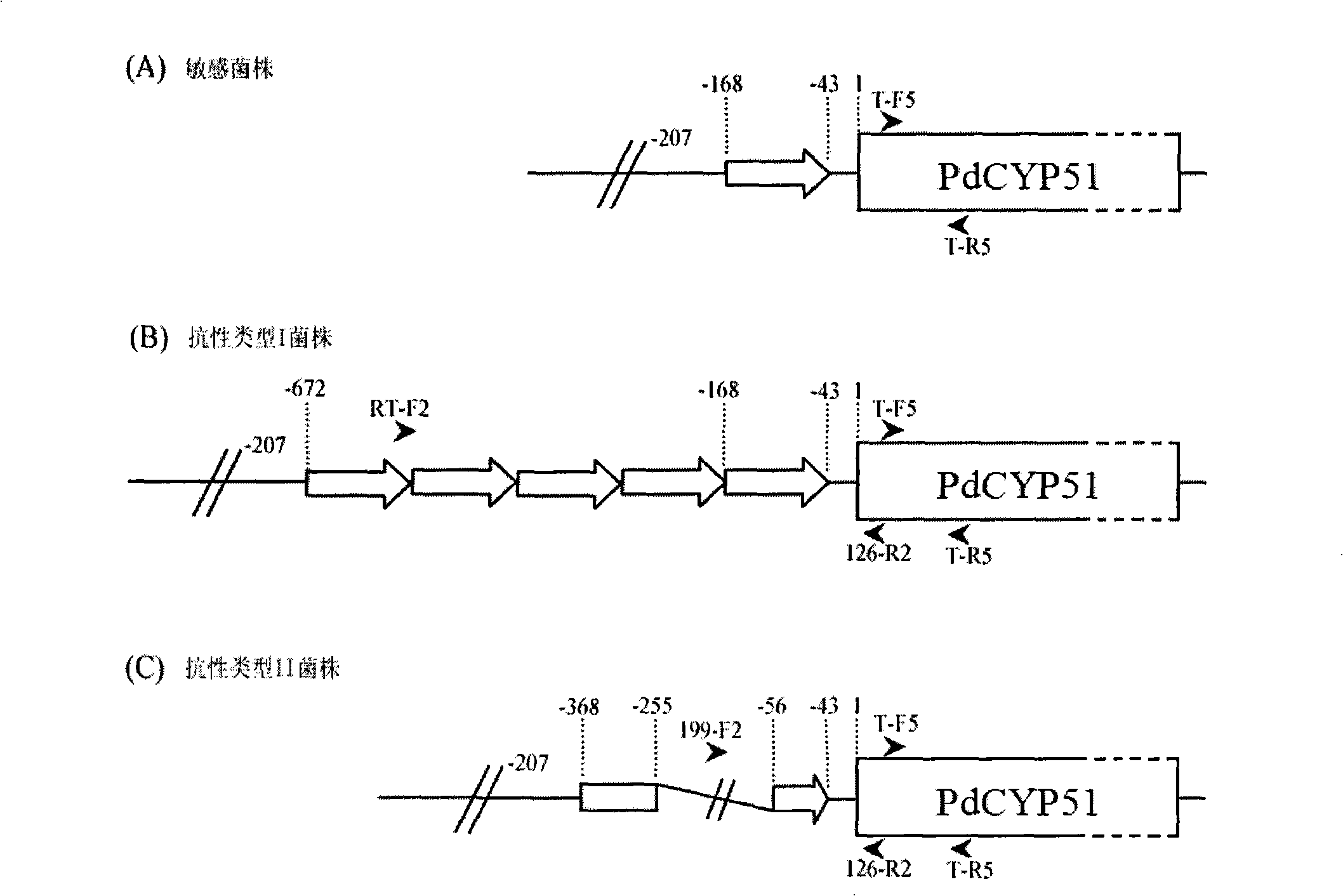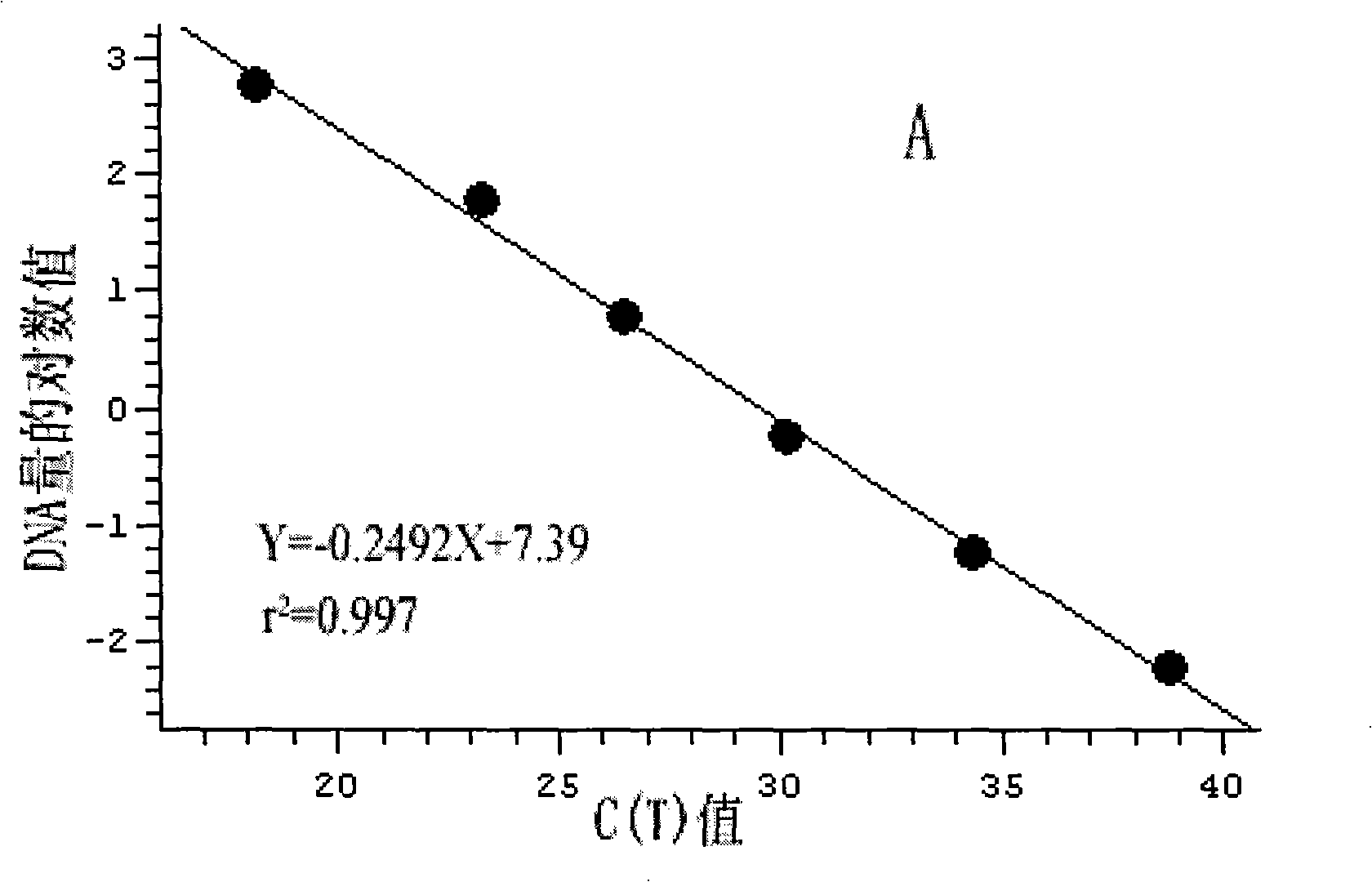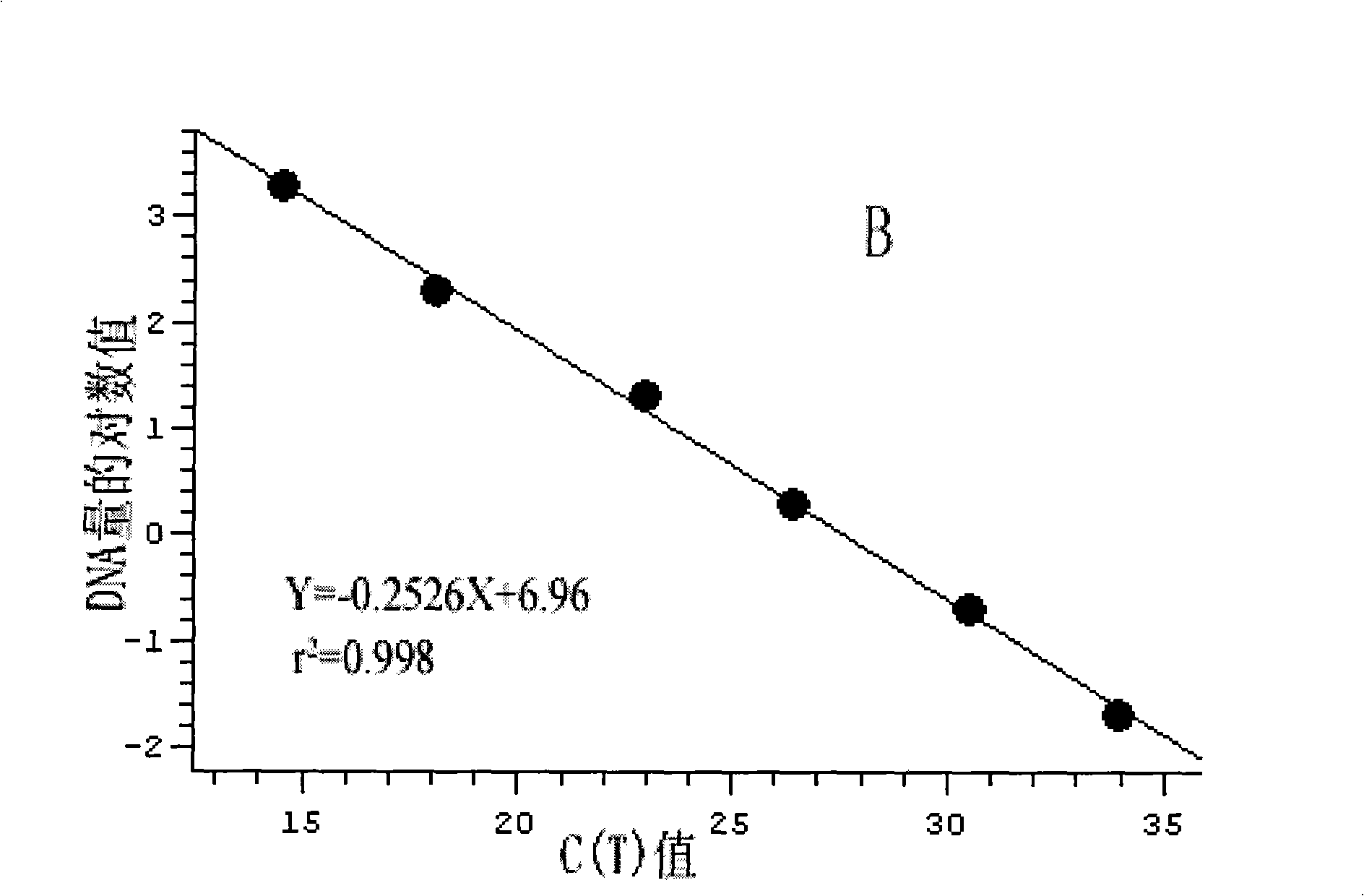Primer sequence for testing imazalil fastness frequency of fingerlike penicillium notatum and testing method
A penicillium and imazalil technology, applied in the field of molecular biology, can solve the problems of early warning and detection of drug resistance of difficult bacteria, unable to reflect resistant strains, time-consuming and labor-intensive, etc.
- Summary
- Abstract
- Description
- Claims
- Application Information
AI Technical Summary
Problems solved by technology
Method used
Image
Examples
Embodiment Construction
[0020] strain type
[0021] P.italicum, P.expansum, Colletotrichum gloeosporioides, Botrytis cinerea, Monilinia fructicola, Brown branch Sensitive strains of Fulvia fulva, Sclerotium rolfsii, Fusarium oxysporum, Fusarium graminearum and Penicillium digitatum to imazalil (PD-W- 3), resistance type I strain (PD01), resistance type II strain (PD19D).
[0022] The above strains are all common plant pathogenic fungi, preserved in the Phytopathology Laboratory of Phytoquarantine Building, Zhejiang University, and can also be obtained by conventional bacterial isolation and purification methods.
[0023] Primer synthesis
[0024] According to the sequence specificity of the target gene CYP51, the specific primer T- F5 and T-R5;
[0025] According to the difference in the number of repetitions of the 126-bp sequence in the CYP51 promoter region of the resistant strain type I and the sensitive strain, specific primers RT-F2 and 126-R2 for the resistant strain type I were designed, ...
PUM
 Login to View More
Login to View More Abstract
Description
Claims
Application Information
 Login to View More
Login to View More - R&D
- Intellectual Property
- Life Sciences
- Materials
- Tech Scout
- Unparalleled Data Quality
- Higher Quality Content
- 60% Fewer Hallucinations
Browse by: Latest US Patents, China's latest patents, Technical Efficacy Thesaurus, Application Domain, Technology Topic, Popular Technical Reports.
© 2025 PatSnap. All rights reserved.Legal|Privacy policy|Modern Slavery Act Transparency Statement|Sitemap|About US| Contact US: help@patsnap.com



